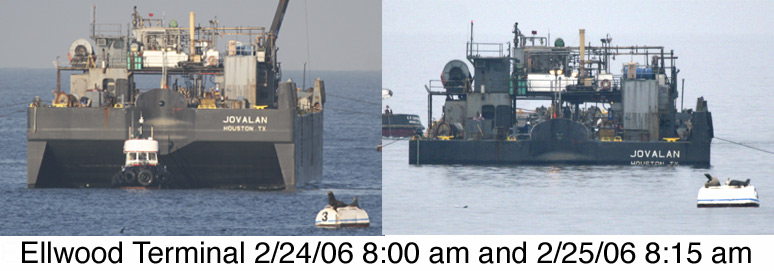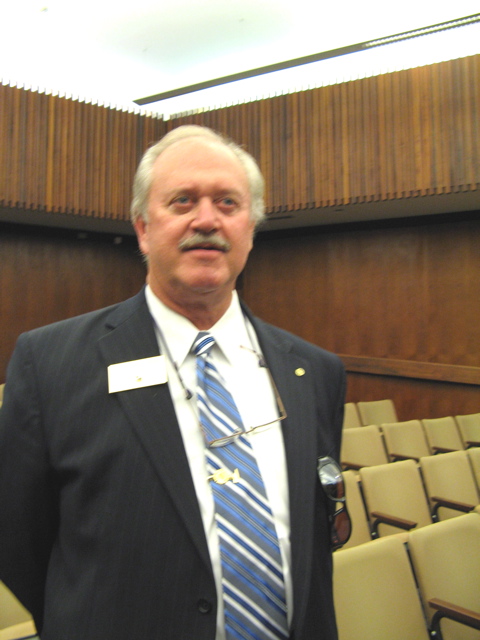Goleta Seeks to Banish the Oil Barge
City Warns State to Retire Single-Hulled Vessel
The Goleta City Council sent a strongly worded, colorfully descriptive letter to the California State Lands Commission urging its members to decommission the Ellwood Marine Terminal, along with the 28-year-old, single-hull Barge Jovalan that carries crude from the terminal to refineries in Los Angeles and San Francisco. Goleta Planning and Environmental Services Director Steve Chase and other city staff members composed the letter in the wake of the November oil spill in San Francisco Bay, due to an accident involving the marine freighter Cosco Busan. The staff presented the letter on December 3 to the council, which unanimously endorsed it.

The Cosco Busan disaster should bring to the commissioners’ minds a “fragile operation” that takes place in the Santa Barbara Channel, reads the letter. “Every 10 to 14 days or so,” it says, “a deckhand uses a hook to lift an industrial hose off of the seabed, attach it to a metal fitting, and send approximately 50,000 barrels of crude oil . . . into the tank of an old, single hull marine vessel, the Barge Jovalan.” Double hulls are the current industry standard for oil transport.
The amount of crude the barge carries is equivalent to half of the oil that spilled during the infamous 1969 Platform A blowout in federal waters offshore from Santa Barbara, pointed out Mayor Michael Bennett. Adding insult to potential injury, neither the cities nor the county of Santa Barbara receive revenue from the Venoco’s operations at the Ellwood Marine Terminal or Platform Holly, where the oil is drilled; the State of California leases the oil field to Venoco, and receives a share of its production as well.

Venoco spokesperson Stephen Greig objected to the letter, saying that Venoco was currently in the midst of preparations for an onshore pipeline to replace the barge, as part of its pursuit of expanded production and slant drilling operations at Platform Holly. After undergoing environmental review at the state level, these projects will come before the council in the next few months, said Greig, and if all goes well, construction on the pipeline should commence at the beginning of 2009. Venoco is not likely to invest in a new vessel to replace the barge for such a short time, he said, and meanwhile the single-hulled Jolavan is the only barge permitted to operate in the channel: Its vapor recovery system is custom-designed to comply with Santa Barbara County Air Pollution Control District requirements.
Chase responded that the pipeline is far from a fait accompli, and would in fact go right through the City of Goleta, giving citizen groups an opportunity to mount direct opposition, although it is also true that the Sierra Club and the League of Women Voters are among those who have called for an onshore pipeline to replace the barge. Another potential snag is the fact that the beach where Venoco’s onshore operations are located, about a mile north of UCSB, is designated as recreational space in the city’s general plan.
If the state were to halt Venoco’s operations, according to Greig, it would have to compensate Venoco, whose lease of the marine mooring was renewed in 2003 for another ten years. Chase countered that the commission has evaded the proper renewal processes. Year after year for more than a decade, he said, the commission has managed to pass the buck to its administrative staff, which has repeatedly extended the lease despite Goleta’s opposition. “This letter sets forth two themes,” Chase said. One is that “oil and water equals catastrophe.” The second theme is that the State Lands Commission must “make a decision,” he said. “They need to terminate oil barging on the California coast.”



